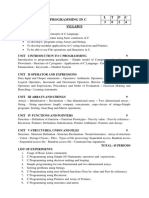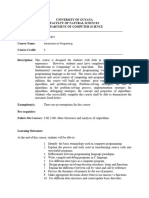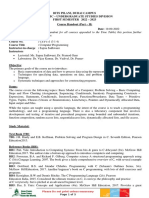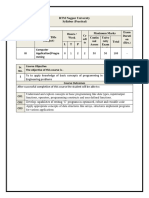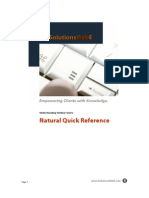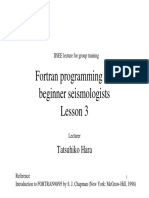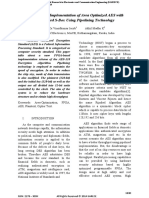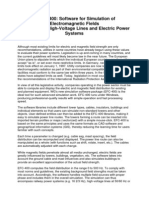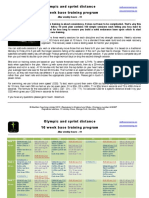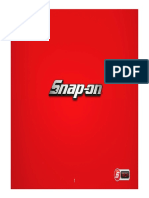23ES11P1 –COMPUTER PROGRAMMING LABORATORY
(Common to all Branches)
Course
Engineering Science Credits: 1.5
Category:
Course Type: Practical Lecture - Tutorial - Practical: 0-0-3
Sessional Evaluation: 30
Basic mathematical knowledge to solve problems
Prerequisite: Univ.Exam Evaluation: 70
and computer fundamentals.
Total Marks: 100
The course aims to give students hands – on experience and train them on the concepts of the C-
Objectives
programming language.
Upon successful completion of the course, the students will be able:
CO1 Read, understand, and trace the execution of programs written in C language.
CO2 Identifythe right control structure for solving the problem.
Course
Outcomes CO3 ImplementC programs which utilize memory efficiently using programming constructs
like pointers.
CO4 Develop, Debug and Execute programs to demonstrate the applications of arrays,
functions, basic concepts of pointers in C
LIST OF EXPERIMENTS
Lab1: Familiarization with programming environment
i) Basic Linux environment and its editors like Vi, Vim & Emacs etc.
ii) Exposure to Turbo C, gcc
iii) Writing simple programs using printf(), scanf()
Lab 2: Converting algorithms/flow charts into C Source code. Developing the
algorithms/flowcharts for the following sample programs
i) Sum and average of 3 numbers
ii) Conversion of Fahrenheit to Celsius and vice versa
iii) Simple interest calculation
Course
Content Lab 3:Implement Programs on Data types, Operators, and Expressions.
Lab4:Demonstrate the significance of operator precedence and associativity in Expression
Evaluation using C.
Lab 5: Implement decision-making constructs: if-else, goto, switch-case, break-continue in C.
Lab 6:Demonstrate the scope of iterative constructs namely while loop, do-while loop and for
loop in addition to structured jump constructs like break and continue using C programming.
Lab 7:(a) Develop programs on one dimensional arrays and multidimensional arrays.
(b) Implement Linear Search technique in C.
1
� Lab 8: (a) Implement various Matrix operations.
(b) Implement String manipulation operations without predefined functions.
(c)Implement Bubble Sort Technique
Lab 9: Demonstrate Pointers & structures and memory dereference using C.
Lab10: (a) Demonstrate the differences between structures and unions using a C program.
(b) Create and display a singly linked list using self-referential structure.
(c) Implement shift/ rotate operations on bit fields
Lab 11: (a) Implement parameter passing technique: call-by-value.
(b) Demonstrate scope and lifetime of variables in the context of subroutines and
functions.
Lab 12: Implement Recursive functions.
Lab 13: (a) Implement parameter passing technique: call-by-reference.
(b) Demonstrate the purpose of Dangling pointers using a C program.
Lab 14: Implement various File operations (Open, Close, Read, Write, Append, and so on).
Text Books:
1. Ajay Mittal, Programming in C: A practical approach, Pearson.
2. Byron Gottfried, Schaum' s Outline of Programming with C, McGraw Hill
Text Books
and Reference Books:
References
1. Brian W. Kernighan and Dennis M. Ritchie, The C Programming Language, Prentice Hall
of India
2. C Programming, A Problem-Solving Approach, Forouzan, Gilberg, Prasad, CENGAGE
Web
1. https://www.w3resource.com/c-programming-exercises/
Resources
2. https://www.onlinegdb.com/





















